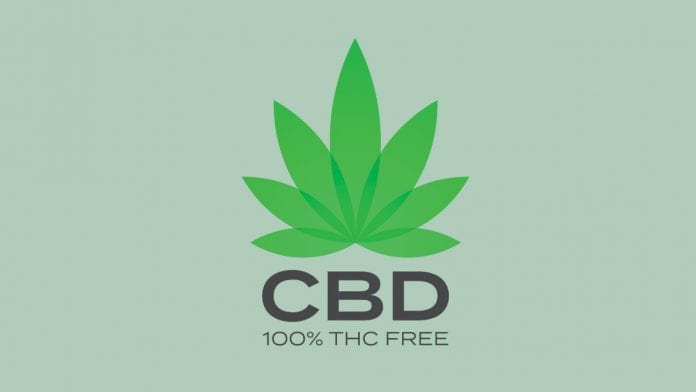
Professor Frank Paloucek explains the importance of quality and a reliable CBD supply, along with the public health risk if this falls short.
Paloucek is a Clinical Professor at Department of Pharmacy Practice, University of Illinois and works closely with the Toxikon Consortium due to his research interests in emergency medicine, pharmacokinetics and clinical toxicology.
He was in attendance at the Medcann World Forum conference in Malta, which Medical Cannabis Network was attending in our capacity as media partner to the event.
There he explained the potential risks surrounding tainted CBD products, the consequences of this in his considerable experience, and why a reliable and high-quality CBD supply is crucial.
Opening his speech at the event Paloucek stated: “I’m going to talk about CBD and the consequences beyond disease. Just to ensure everyone understands, I live in Chicago and I work very closely with the Illinois poison centre, as a College of Pharmacy faculty member.
“I work as part of a group called the Toxikon Consortium, which is a multi – institutional multidisciplinary group. I work in the University of Illinois hospital, in the emergency department. For the first ten years of my career I was the clinical toxicologist there, and since 1999 I have just been a faculty member and an attendee with the Toxicon Consortium.
“It is our job to provide the medical expertise and backup to the Illinois poison centre. The poison centre is the single busiest poison centre in the United States. I’m going to be talking about after the science, after everything that we do is done well, to be good and safe and efficacious, what human beings manage to do with CBD anyway and lessons that we have learned from it.”
CBD supply
He went on to explain that Cannabidiol (CBD) had been technically illegal in the US until 2018 when a Farm Bill was passed which permitted the cultivation and sale of CBD products as long as they contain less than 0.3% THC and that the more optimistic projections are that the industry could be worth USD $25bn (~€22.5bn) by 2025.
He continued: “It [CBD] is being sold as an oil for lamps, for massage therapy, cooking, bracelets, toothpicks, it’s put into honey, cheeseburgers and it is even being used as a mascara. I’m not saying that it doesn’t work, but I am saying I do not understand how it works with toothpicks.
“For example, it’s quite possible to go online and purchase from a pharmacist a formulated CBD product, things such as music, candies, oil and capsules to help you sleep. It doesn’t state this obviously, the product will just be called ‘sleepy 2%.’ The FDA will not regulate these products because they claim to treat something; they are free to make their name whatever they want, they just can’t claim to treat something.
“Now here’s the problem: last weekend, I was shopping for a new sheet and pillow for my bed. I went to a store that specialises in bathroom and bedroom products. I found this giant display for CBD oil which had four lamps, it had liquids, it had bracelets, it had massage oils and I thought how appropriate I can get all the CBD I want, in all of the different dosage forms.
He continued: “Clinical toxicologists live by this quote by Paracelsus who said, ‘the dose makes the poison.’ I prefer a little more context; I prefer ‘poison is in everything.’ I’d like to find out how that is relevant to what I’m going to be talking about today as we go along and get to know things about ‘poison’ – the dosage makes it either a poison or remedy.
“I am not saying that [with] CBD the dosage is what is important for its toxicity, I’m saying what is in CBD is important as it is being sold to consumers and we have to make sure we separate that distinction.”
Drug testing
Outlining the issues with the accuracy and purity of drug screening in the US he added: “There was a very prominent article recently in the New York Times where they described a person who had been giving his child CBD infused honey. The child failed a drug screen and the [the parent] was then divorced, and he lost custody of the child. Right now, we still do not have not have a universally used drug screen in the United States, or a universally agreed upon method for testing for THC.
“A couple of the oldest and cheapest tests that are frequently used by the police, actually cannot tell the difference and there are consequently false positive rates. Recently in the journal molecules, they tested 14 commercially available CBD products. Most of the products did very well with relatively minor deviations in percentage from the listed ingredients – anywhere from nine to 25%. Commercially available products are probably pretty good, but you still need to warn the people using this.
“I think our patient education needs to reflect that you need to be careful with your screen. Maybe not so much with the commercial, but when we start talking about the illicit products such as what you can find and buy online from who knows what supplier. This is where we see more trouble with products.”
Elaborating on the reported issues within the industry he continued: “In 2016, (the latest data that we have) there were only five cannabis products tested. I do not have a study, but I have newspaper reports quoting wholesalers of CBD oil, claiming that recently in the last year they have not been able to obtain enough CBD supply from their sources to meet the demand.
“Furthermore, they are given samples of product from their suppliers which 100% meets the standards of not containing any great amount of THC, but when they receive the actual 55 gallon product consignment over 50% of it is failing because it has too much THC in it.
“So, providers of the products must be careful that everything has been done to guarantee the purity up until that point in time, and that the wholesalers themselves are in control. I do think it’s interesting to note that the recent heroin seizures in the United States are now finding that heroin is being adulterated with synthetic cannabinoids because they are cheaper and easier to make and get in or out of the United States, than bringing the heroin in itself.”
Risk to the public?
Addressing some issues previously reported with synthetic cannabinoids Paloucek continued: “Now, I want to cover a couple of important things that we’re seeing happen here. In April of 2018 you may have heard that we had a severe outbreak starting in a suburb of Chicago then later in Indiana and Wisconsin, in March and April of 2018. Young adults who had purchased synthetic cannabinoids and were presenting with severe bleeding and massively elevated INRs were failing to respond to conventional doses of Vitamin K.
“I was directly involved with many of these cases with the other Pharmacist that works in the emergency department and through our Toxikon Consortium. This issue was quickly reported to the Illnois Department of Public Health, then the CDC; the CDC took over and by April the CDC had issued a statement about this. It ended up resulting in between four and ten deaths.
“It’s a little cloudy, there were some acute trauma injury patients and spice users who had had severe haemorrhages at the time of death but were not tested so we cannot be sure. There were reports of a regular bicycle hitting a tree and [the rider receiving] relatively minor wounds in terms of lacerations, but they just couldn’t stop the bleeding. They did not test the INR; that person should not of died but they did.”
He went on to elaborate: “Just this last September I was having meetings and a threefold number of calls involving CBD specifically than over the past six years. We see with exposure that CNS sedation is much more likely than expected. In fact, when someone said that they were using CBD or medical marijuana and their child presents with seizures or excited overactivity, we immediately disbelieve the parents and we try and isolate people individually and find out whether they are also using synthetics on the side.
“There was a well described case in which a child bought CBD oil because it’s cheap and experienced seizures. The child had four days on the treatment and then developed severe repetitive seizures and required hospitalisation. They tested the product for purity and it was contaminated.
“There was a very odd case where a mother swore that she used medicinal cannabis gummies. Her child presented with excessive sedation and was brought to the hospital. We are sure that, even though we never asked parents about the use of spice, I think it’s unlikely that this was actually CBD oil; I think it was they were using these [synthetic] products.”
Addressing the high-profile instances of vaping related issues recently he continued: “The outbreak of severe lung injury with the use of e-cigarette vaping products – it is not the nicotine. What is happening here is that people are buying cartridges intended for those types of vaping products and the cartridges contain either 1000 milligrams of THC itself which is a very large amount, and/or is contaminated with other supplies because the THC oil producers – especially in LA – haven’t been able to keep up with demand. As a result, they were buying off the internet from crypto markets and these products have been contaminated with god knows what.
“It isn’t necessarily inflammatory, but the inside of the lungs can be coated with food oils that are intended for oral consumption not inhalation.”
In conclusion, he urged the crowd to be vigilant when producing CBD products. “Please remember purity; Why, should we continue to suffer?”


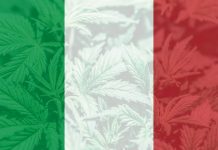
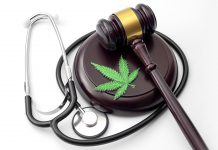

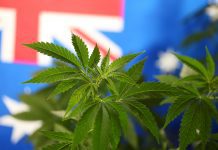

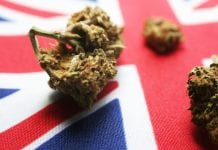
It’s horrifying. I think we should go to the deep of this. We need to analyze the reason behind this type of incidents.